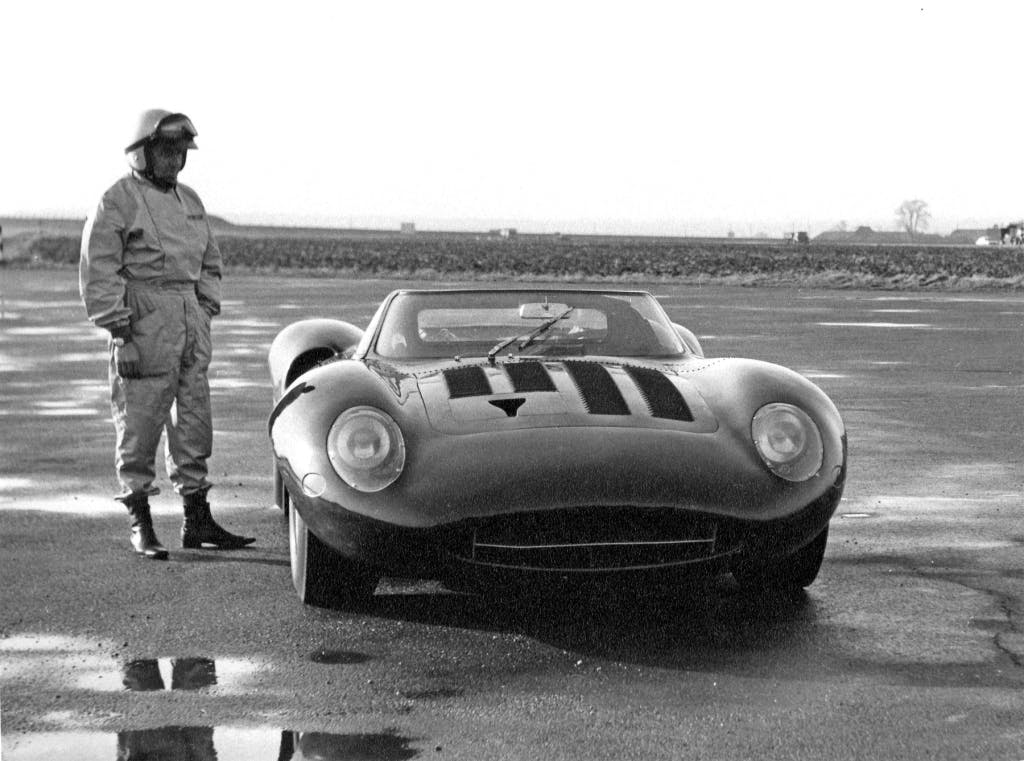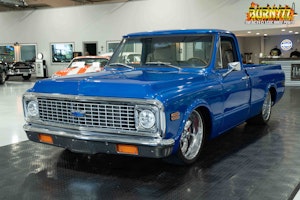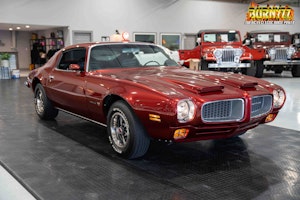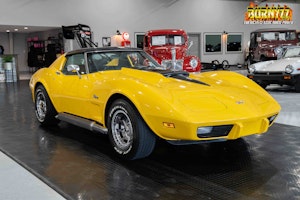Media | Articles
Leno Drives Replica of the XJ13, Jaguar’s Le Mans Could-Have-Been

Endurance racing has brought us some of the prettiest and most storied cars ever. Building a car that can not only drive for 24 hours but drive fast for 24 hours is a huge feat, and that means some racers destined for the 24 Hours of Le Mans might never even make it to the starting line. Of all those cars that could have been, we think the prettiest is the 1966 Jaguar XJ13 and we’ll point to this week’s episode of Jay Leno’s Garage as exhibit number two.
If the XJ13 sounds familiar, but just you just can’t quite picture it, don’t be embarrassed. There was only one built and it never got past the track-testing phase. Jaguar got cold feet about racing, which may have been fortunate in hindsight, since, in the mid-1960s, the first Ford GT40s were hitting the starting line of the Nürburgring 1000, and you probably know what happened at Le Mans in 1966. The XJ13 was propelled by a specially developed double-overhead-camshaft V-12 engine that looks an awful lot like two XK inline-sixes mated at the hip. The driver sat in front of this powerplant and used a left-hand shifter to row the gears in a five-speed ZF transaxle.
Marketplace
Buy and sell classics with confidence

Sadly, the one and only XJ13 got mothballed in a corner of the factory until 1971. It was trotted back out when the E-Type was getting a V12 powerplant and a V-12 race car suddenly made sense. During the filming of a promotional video, the XJ13 was crashed. It sat for years until it was discovered and rebuilt. It remains the only one built by Jaguar, though one dedicated enthusiast, Neville Swales, built a painstakingly accurate “tool room copy.”
Then, there is the polished XJ13 replica Leno takes for a spin this week. We won’t get all philosophical about authenticity (well, not a second time), because what is clear is the amount of work put into creating a car like this. The owner, Tyler Schilling, even brings a smaller version of the buck that was used to shape the car: a lattice of wood that allows the layout of the hand-formed, riveted panels and sets the final dimensions of the car.
The engine is a single-overhead-cam design rather than the quad bumpstick units found in Jaguar’s and in Swales’ cars. The look on Leno’s face while shifting through the gears, however, shows that any horsepower difference is not missed. Schilling’s car is just 2300 pounds and you can tell just how svelte it is when you see both him and Leno wedged inside it. The sonorous note of the V-12 coming from something that a police scanner might call out as an extremely low-flying UFO makes for one heck of a car, with one heck of a story—all because of a car that never took the starting line at Le Mans.
***
Check out the Hagerty Media homepage so you don’t miss a single story, or better yet, bookmark it. To get our best stories delivered right to your inbox, subscribe to our newsletters.













The XJ-13 should have been a coupe. The one beef I have with it’s appearance is that the tumblehome (Look it up) of the windshield sides is more upright than what’s behind the door/cockpit. It looks strange, even if there’s a logical reason for it from an engineering/aero standpoint. A proper closed roof with side windows would have fixed that.
Regardless it is a masterpiece.
The look, sound and craftsmanship is amazing.
In a world over loaded with poor or unimaginative Cobras it is nice to see something like this.
It’s a gorgeous car and sounds great. Would love to see it in person.